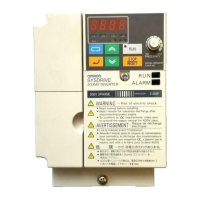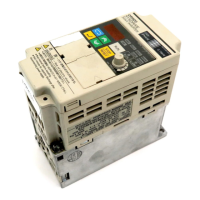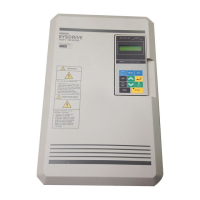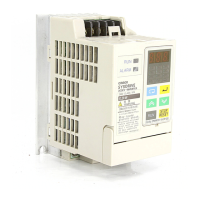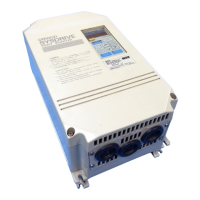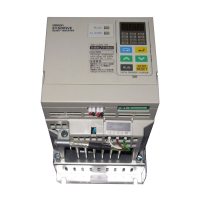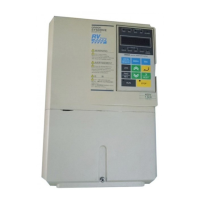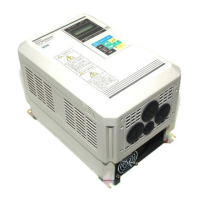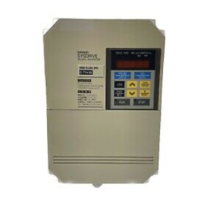4-6
4-2 Operation Example
1 Power Connection
H Checkpoints before Connecting the Power Supply
·Check that the power supply is of the correct voltage and that the motor output termi-
nals (R/L1, S/L2, and T/L3) are connected to the motor correctly.
3G3MV-A2j: Three-phase 200 to 230 VAC
3G3MV-ABj: Single-phase 200 to 240 VAC (Wire R/L1 and S/L2)
3G3MV-A4j: Three-phase 380 to 460 VAC
·Makesurethatthemotoroutputterminals(U/T1,V/T2,andW/T3)areconnectedtothe
motor correctly.
·Ensure that the control circuit terminals and the control device are wired correctly.
Make sure that all control terminals are turned OFF.
·Set the motor to no-load status (i.e., not connected to the mechanical system).
H Connecting the Power Supply
·After conducting the above checks, connect the power supply.
2 Check the Display Status
·If the display is normal when the power is connected, it will read as follows:
Normal
RUN indicator: Flashes
ALARM indicator: Off
Simplified-LED (setting/monitor) indicators: FREF, FOUT, or IOUT is lit.
Data display: Displays the corresponding data for the indicator that is lit.
·Whenafaulthasoccurred,thedetailsofthefaultwillbedisplayed.Inthatcase,referto
Chapter 8 Maintenance Operations and take necessary action.
Fault
RUN indicator: Flashes
ALARM indicator: Lit (fault detection) or flashes (alarm detection)
Simplified-LED (setting/monitor) indicators: FREF, FOUT, or IOUT is lit.
Data display: The fault code, such as UV1, is displayed. The display will differ
depending on the type of fault.
Test Run Chapter 4
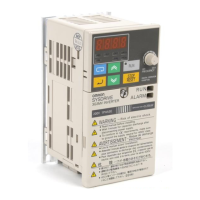
